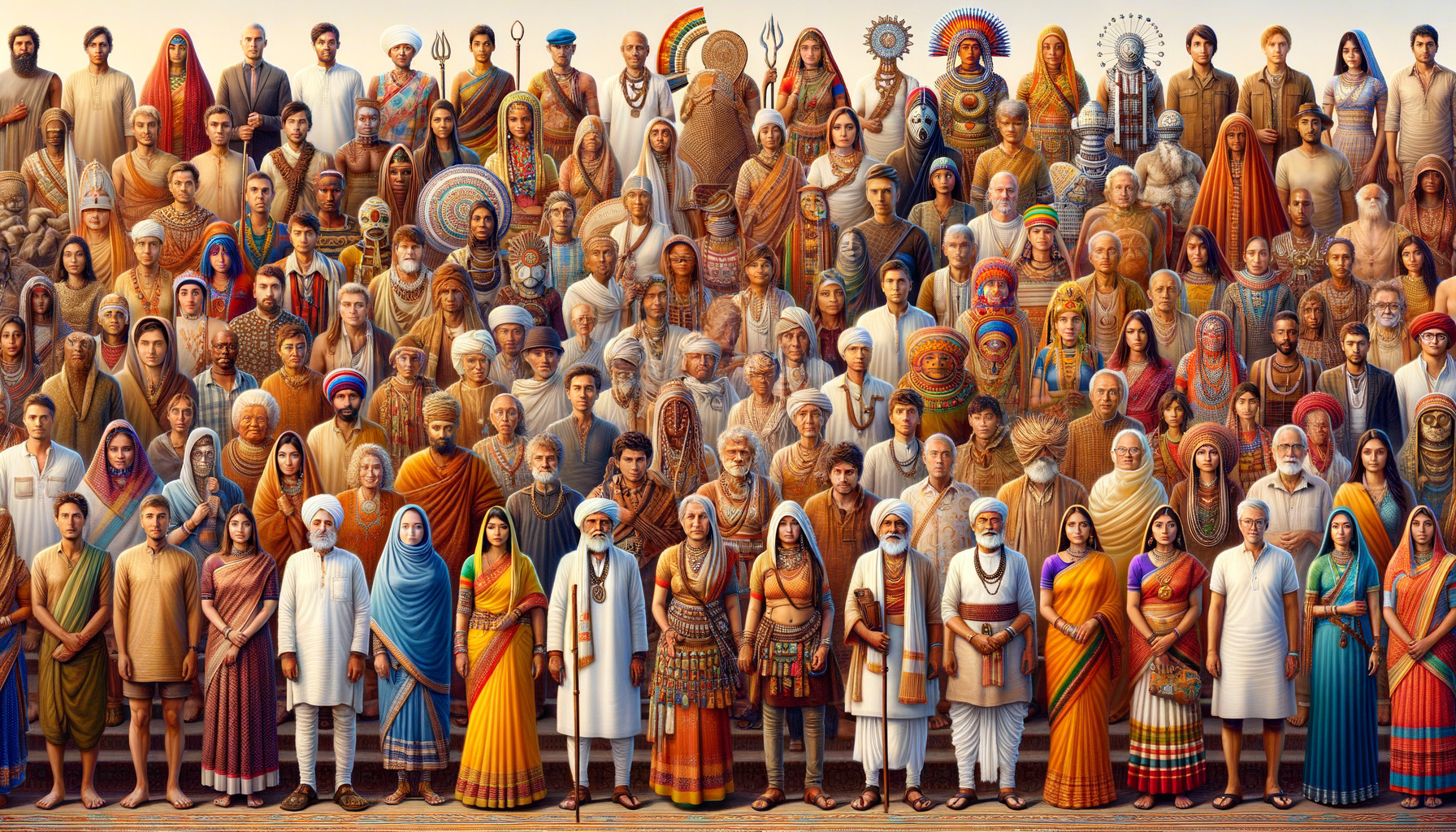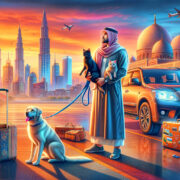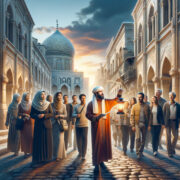
Exploring the Diverse Cultures of India: A Vibrant Expedition
Introduction
Thinking about the complexities of Indian cultures is like a rattling, whirling ride through a kaleidoscope. In this article, called Exploring Indian Cultures, we set off on a journey across this dynamic cultural puzzle. Special features: Highlighting the treasury of traditions, local customs, festival significance and age-old stereotypes will not only be discussed but also properly celebrated. You’ll have a feast for the senses with a deep dive into music, dance, art, literature and language. This complexity adds another layer of depth, from the intricacies of wedding ceremonies to the nuances of spiritual paths. In terms of food, as soon as you take a bite, the whole thing is like a symphony on your palate. Adding further riveting layers to our cultural narrative, we must ponder the impact of western and tribal cultures on Indian ethos. In short, our expedition will uncover the everlasting-woven tapestry of Indian cultures, in which each thread tells a mesmerizing story.
Indian Culture–A Sumptuous Tapestry
In its symphony of diversity, the Indian culture’s vastness ranges as far as the subcontinent; yet all these religious, linguistic and regional threads are woven together into a one-of-a-kind whole. This feeling for plurality is apparent in the different cultures of various regions-the sound of Northern India, deepened and sifted through its historic richness, differs characteristically from that of Eastern India where distinctive cultural practices include such things as alleys or labyrinths within Bengali literature, Odissi dance, unique tribal culture–these add diverting shades to. Now as we veer toward Western India the tale changes. It could be Rajasthan’s rich cultural heritage, or it might be Gujarat’s deep-rooted traditions–all adding another thread to the great Indian cultural tapestry. Local traditions, art forms and regional delicacies also benefit from a splash of Dravidian flavor. In goes the Southern spice.
Exploring Indian Cultures: The Vibrant Experience of Rajasthan
A tribute to India’s glorious past, plunges the senses into a riot of colors and symphony of sounds. You can feel the stony silence from forts swirled by dry air. Peer at dancing puppets brought to life on hidden strings. At another extreme, picture the ‘ghoomar’, a fascinating Rajasthani folk dance where dancers twirl like dervishes in brightly-colored skirts. Merrily celebrating festivals Right across are royal ‘bandhani’, intricate weaves telling tales of courage and valour in the tough life there. The songs of the primitive heroes resound in the cold and empty countryside, mingling with the chords struck on a ravanahatha–the home-made musical instrument associated with local minstrels (bhopas) since ancient days. Rajasthan is an explosion of stories, traditions and flavors wrapped up in its fiery red turbans and peacock blue sarees. As diverse as the people who populate it, this tourist paradise stands as a symbolic emblem of Indian culture at large.
Indian Culture: Venturing into the Art, Literature, and Language
Thanks to this rich palette of radiant arts, nuanced literature and vibrant languages, one can rightly speak of the living culture of India. In stark contrast stand the rich tapestry of India paintings. They range from the vibrant Madhubani to detailed Miniature. It is wonderland fantasy and awe-inspiring each one with the complex intricacies of local legends. Explore Indian literature; it is as if you were moving through the aeons. Indian literature is another layer of complexity, from the sacred ancient Vedas to the storytelling magic of Rabindranath Tagore. The power of Indian languages, a storehouse of cultural diversity- imprisoned in captivity. More than 1652 dialects and 22 official languages encapsulate a mesmerising cacophony, as well as an imposing harmony. These varied strands of culture are not compatible in legalism, but play together in an orchestra, illustrating a sonic paradise of one-ino-many catching our eyes and broadening our knowledge about the variety of shades within Indian culture.
The Traditional Folk Art of India as Part and Parcel of Indian Culture
Traditional folk art In exploring the fascinating, intricate fabric of Indian cultures, one aspect leaps out among all others: its profound impact. Our odyssey is full of life, and we see what art can be: a celebration of this world, in which everything is richly colored with emotions and history. It intertwines generations, strengthens cultural connection and performs a wonderfully reductive Pankha. A rich lexicon: The many cultural flavors of rural India’s work testify to mind-boggling diversity, like a mirror held up to the wondrous conceptIn addition, the folk art of India weaves a fascinating set of universals across this subcontinent. Maybe it’s surprising that Warli art from Maharashtra and Madhubani from Bihar share so much in common, yet with different strokes to their stylistic brush. Details are paramount, aren’t they? There are also visual narratives about rural life, such as birds flying in circles, scenes of farming and wedding rituals. These works are like the grassroots ‘own graphic novels.
Indian women’s dynamic role and their ethnic identity
Like colors in a kaleidoscope, Indian women play an endless variety of roles. They are dazzling in their dynamism and ever interesting for their variations. Tradition-based, yet moving towards modernity: These female figures are shapers of India ‘s cultural image. The mother, who represents nurturing love, warmth and protection, is worshipped as a sort of near-deity. However, the fierce woman warrior, embodying strength and valor protects the realm. No one can deny that the Indian woman, who cannot by any stretch of the imagination be described as fair-complexioned, is definitely a torch standardising perseverance. Now seeing the unlawful opening up and becoming a doctor, entrepreneur, astronaut or an actress; she is changing people’s cultural views. But amazingly her cultural identity is tightly interwoven in the weave of Indian attire. The delicate folds of the Gujarati ghaagra, the cozy warmth of a Kashmiri pheran or the authoritative drape of a Maharashtrian nauvari – different yet similar.
Appreciating the Intricate Indian Philosophy
This vast intellectual edifice, Indian philosophy glows, as a bright splash of color in intellect’s dreary black-and.-white. Lyricized with philosophical exuberance, each norm and pattern. A single dance-step into the thumping labyrinth of Yoga and Meditation methods, and into India’s pensive consciousness from which looks like a muddy streak across its cultural ethos–the sun rises through sudden rain. Yet the pulse still retains traces of its transience, tracing back to time. The ecstasy inactive on one’s skin; the colorful lifestyle written into Indian textiles. Invisible Echoes: There are impressions of India’s past to be found shot through the vast expanse of today held by modern architecture. Allied to this, India’s cultural sway stretches even as far into the mundane as martial arts. It reaches down even to their sinewy tendons. Indian pop culture The new sonnet: sweating gloriously in the goodness There is so much to see/Predators all around Fragrant beats of Cinema 24 carat urges Music rhythms Fashion svelte waves make a good looking cultural landscape.
India’s Eclectic Traditional Costumes
India, heralding the wealth of a myriad cultures with majestic straight-sleeved patterns and beautiful floral borders–through these grandiloquent traditional costumes Men’ can show off their beauty while revealing at length the story behind each region they come from. As an example, consider the riot of colors Lehenga- Choli. This is what North Indian women wear to express their dynamic Punjabi soul. However, obscenely at variance are the graceful weaves of Assam (in North- East India), which form a Mekhela Chador. They magnificently represent the poise of the Brahmaputra and its Bihu dances. With tribal traditions such as those of Nagaland comes a simplicity; it becomes an art. Phanek and Innaphi: Manipur’s serene lakeside scenes and its hard martial dances are incarnated in the minimalistic dresses. Head south and you’re drenched in the aesthetics of ‘Kasavu Sarees’, whose golden attire balance off golden Kerala coasts; while men dish out a more relaxed look with their typical Lungi. No single garment can capture India’s cultural crucible of color and expression, but collectively these traditional costumes weave an electic tapestry consisting of unforgettable impressions. With their permeating evolutionary sophistication And bursting riotousness The make a curious melting pot indeed.
Determining the Changes Wrought by Colonization in Indian Cultures
The wheels of colonization have woven a paradoxical fabric. Therein stands Indian civilization, unfathomably intricate. The word-spinners spin tales: of fearsome booty, but also wonders in unexpected ways. What absurd, beautiful metamorphosis! Puzzling duality: Braided with the cultural tapestry of India’s independence, British dominion. Intermarry the caste-systems, ghastly remnant of colonial imposition. Paradoxical indeed! Loathsome looter, notorious colonizer became accidental benefactor: Bureaucratic forms; English language phenomenon and institutional education. The British–light bearers to us, crowning enlightenment to a nation stumbling in the dark. But the spirit of India, unshakeable in fact, rose undaunted. Sensibility remained, painful vivisections of culture breeding philosophies. The risen phoenix, teaching lessons in the wake of ashes amidst slippery epochs following ruptured identity. These painful residues, to whatever extent they can be humanized portray nuanced depictions of the way Indians are. But, under the guise of civilization’s hues, do Indians still hum forgotten lullabies? Or just get lost in globalization’s mind-blowing beginner’s maze? Reflections force us on internal quests within our cultural continuum.
Conclusion
Now immersed in Indian cultures’ swirling symphony, we have absorbed the colorful chaos of hues. Regurgitating up traditions centuries deep and etched into the country’s lifeblood. But on the mesmerizing tapestry of language, beat out in a myriad musical rhythm; and elaborate rich cuisines – there is an unchanging essence: The general principle-people create unity from phenomenal diversity. Such omnipresence is witnessed in spiritual paths (religious places, holy men), various regional cuisines and characteristic dress. These things are shown off to beautiful consequence at wedding rites one finds almost everywhere. It all makes of a dazzling staged scene before your eyes as you move about the country’s cultures. In terms of the fascinating folklore, distinguished rural-urban cultural differences and unique role that arts and festivals play here’s not a bad case for this whole cornucopia can be considered rather complex file. Today, the soul is weakened but fends off all challenges. Just as Western trends and styles are quickly mixed into this universe-sized culture, so has a huge sea of gold been poured in to turn it from red. This voyage into fascinating aspects of Indian culture turns out to be a journey both exhilarating and sensitizing, touching bottomless depths in the human spirit. The thing is that such grandeur exists in the startling flashes of beautiful confusion permeating a supreme universality, which Indians call India. Here’s to integrating the peoples of the world, in all their eclectic and enigmatic splendor!
Recent Posts
Traveling with Pets: A Comprehensive Guide
Beach Retreats: Finding the Perfect Sandy Getaway
Historical Tours: Reliving the Past in Iconic Cities
All Categories
Tags

Phuket



